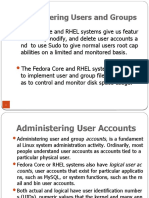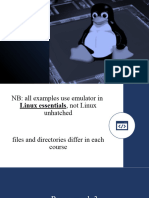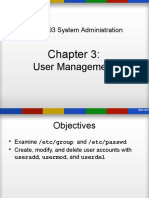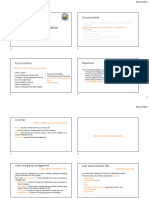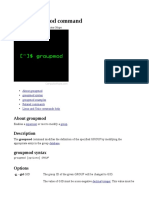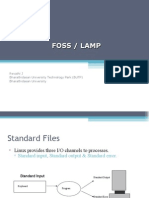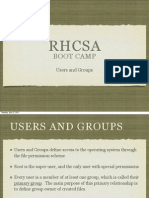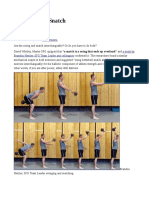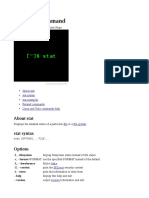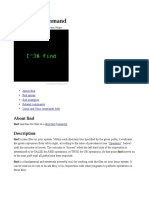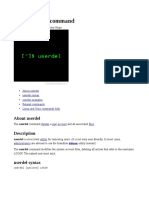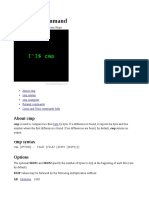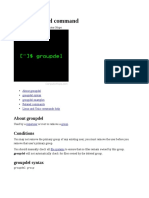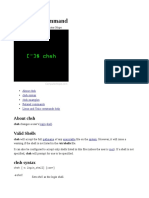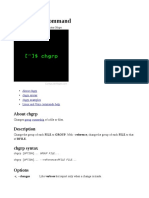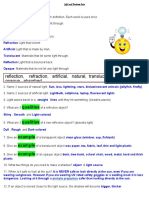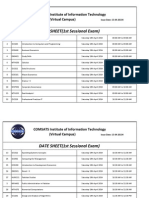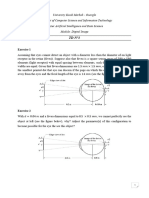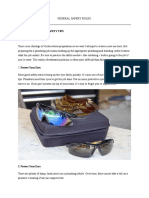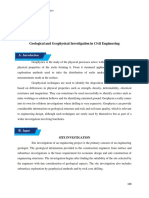0% found this document useful (0 votes)
105 views4 pagesGpasswd Command
The gpasswd command is used to administer the /etc/group and /etc/gshadow files which contain group and secure group information. It allows adding or removing users from groups with options like -a and -d, and can set group administrators with -A or restrict access to a group with -R. The /etc/login.defs configuration file contains variables that control gpasswd behavior like the encryption method and number of SHA rounds.
Uploaded by
DarkoCopyright
© © All Rights Reserved
We take content rights seriously. If you suspect this is your content, claim it here.
Available Formats
Download as ODT, PDF, TXT or read online on Scribd
0% found this document useful (0 votes)
105 views4 pagesGpasswd Command
The gpasswd command is used to administer the /etc/group and /etc/gshadow files which contain group and secure group information. It allows adding or removing users from groups with options like -a and -d, and can set group administrators with -A or restrict access to a group with -R. The /etc/login.defs configuration file contains variables that control gpasswd behavior like the encryption method and number of SHA rounds.
Uploaded by
DarkoCopyright
© © All Rights Reserved
We take content rights seriously. If you suspect this is your content, claim it here.
Available Formats
Download as ODT, PDF, TXT or read online on Scribd
/ 4


